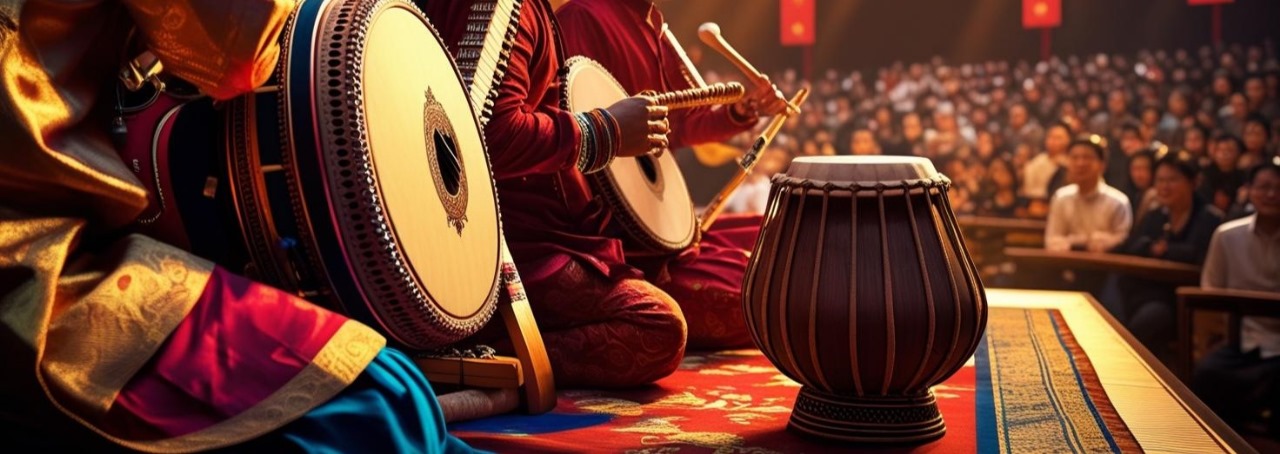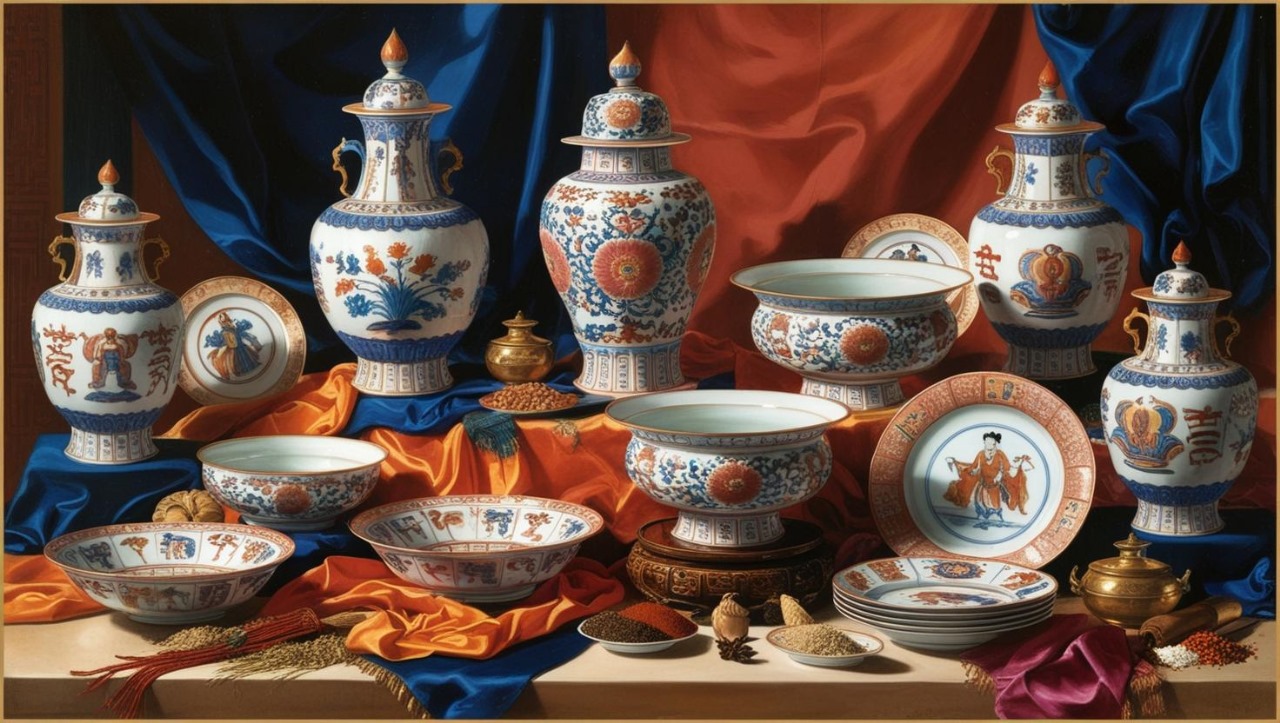Perhaps one of the most enduring and significant cultural artefacts that were transmitted from India into China were ornamental trees like the Bodhi and Sal tree. Both have featured prominently and extensively in diplomatic and cultural contacts between the two ancient civilizations. The trees and their representations fascinated Chinese emperors, travellers and other elites. They carried the influences of Indian civilization to China.
From Harshavardhana’s time in 647 A.D, when ornamental trees were given as gifts to the Chinese court, to when Indian Prime Minister Narendra Modi in 2015 gifted saplings of the Bodhi tree to the Chief abbot of the Big Wild Goose Pagoda in Xi’an, trees have featured prominently in civilizational contacts. The religious and diplomatic importance of the Bodhi and Sala trees has endured over nearly 2000 years and continues to advance cultural interaction between India and China.
Roots
China was fascinated with trees and plants closely associated with the Buddha and his life. The Bodhi tree, under which the Buddha attained enlightenment and the Sal tree, under which the Buddha died, were considered sacred. Chinese travellers came to India, having journeyed thousands of kilometres and encountering great hardship, to see and take these ornamental trees back to China. Xuanzang, a Chinese monk who travelled to India in 629 A.D to find out more about Buddhism, states that the Buddha attained nirvana under the Bodhi tree, describing it as being similar to an oak with glossy leaves. He also visited the Bodhi tree under which the Buddha attained enlightenment, mentioning it several times in his travelogue. He says about the Buddha and the Bodhi tree:
“Going southwest from Prāgbodhi Mountain for fourteen or fifteen li, I reached the bodhi tree. At the center of the enclosure of the bodhi tree is the diamond seat. The bodhi tree at the diamond seat is a pipal tree, which was several hundred feet tall in the time of the Buddha, and although it has been cut down or damaged several times it still remains forty or fifty feet high. Because the Buddha attained full enlightenment while sitting under this tree, it is called the bodhi tree. The trunk of the tree is yellowish-white in color and its branches and leaves are always green; they never wither nor does their luster decrease, whether in winter or summer. Each year on the day of the Tathāgata’s nirvana the leaves fade and fall but they grow out again very soon.”
He also mentions the Sala tree several times in his book. One mention includes a description of the tree not far from the west bank of the Ajitavati river in Kusinagara:
“The śāla tree is similar to an oak, with a greenish-white bark and very glossy leaves. Four of the trees in the grove are unusually tall and mark the place where the Tathāgata entered nirvana.”
Diplomatic Significance
The leaves and saplings of the Bodhi and Sala tree have been at the centre of diplomatic exchanges, facilitating a dialogue between kings in India and China. King Harsavardhana and the Tang dynasty interacted through envoys and intermediaries, one of which was the Bodhi tree. For Harsavardhana’s third mission to China in 647 A.D, his envoys offered the Chinese emperor saplings of the bodhi tree. The Second Tang mission to India, led by Wang Xuance, even placed an inscription beneath the Bodhi tree at the Mahabodhi Monastery in Bodh Gaya in 645 A.D. The missions’s artisan, Song Fazhi, even made a painting of Buddha under the Bodhi tree, which became the blueprint for sculptures at the Jingai Monastery in Luoyang and in Chang’an.
大唐抚运,膺മ寿昌。
化行六ਸ,威稜八荒。
身毒稽颡,道俗来王。
爰发明使,瞻Ԕ道场。
金刚ѻᓗ,千Ԕԓ居。 ሺ
容相好,弥勒规摹。 灵
塔壮丽,道树扶疏。 历
朽,神力焉如。
"The Great Tang was established in accordance with the fortune. The Emperor ascended the throne; may he have longevity and prosperity! His reign covers all six directions, and his power governs all eight regions. Hindu people pay their homage, and both religious and secular ones keep their head down. The Emperor sent out splendid envoys to visit this holy dharma site, where the vajra (diamond) seat had been occupied by thousands of generations of Buddhas, where the statue of the Buddha was handsome and gorgeous, which was built by Maitreya, where the holy stūpa was magnificent, and the dharma tree was flourishing. This place survived many kalpas and still stood erect. What amazing divine power it was! The Emperor sent out splendid envoys to visit this holy dharma site, where the vajra (diamond) seat had been occupied by thousands of generations of Buddhas, where the statue of the Buddha was handsome and gorgeous, which was built by Maitreya, where the holy stūpa was magnificent, and the dharma tree was flourishing.
- Inscription by Tang mission at Mahabodhi Monastery under the Bodhi tree
The practice of offering saplings or leaves of the Bodhi tree as a gift to Chinese emperors has been a common practice in India-China relations. Ornamental trees have been offered as a gifts several times during exchanges between Indian Buddhist monks / envoys and the Chinese court. In 982 A.D, an Indian monk carrying a message from an Indian king called Mo-xi-nang, travelled to the Chinese court and took seven leaves from the Bodhi tree with him as presents. In 998 A.D, a monk from Central India called Ni-wei-ni was granted an audience by the Chinese emperor, to whom the monk gifted leaves and seeds of the Bodhi tree along with Sanskrit manuscripts. In 1005 A.D, a monk from Kashmir presented the emperor with Sanskrit cannons and Bodhi leaves. These instances of exchange reveal the rich contribution of the Bodhi and Sal tree to the history of interaction between India and China.
Temple Plants
The Bodhi and Sala trees also made their way into China with the help of Indian monks. The seeds of the trees were planted in temples across China and sparked artistic expressions. For instance, in 502 A.D an Indian monk Zhiyao Tripitaka carried a sapling of a Bodhi tree from India to the Guangxiao Temple, where he planted it. The tree was transplanted to several temples across China to the Shaoguang Nanhua Temple and Zhaoqing Baiyun Temple, for example. In the Guoqing Monastery, the birthplace of the Tiantai Sect of Chinese Buddhism, even today there are two ancient Bodhi trees in the courtyard in front of the Meditation Hall, whose seeds were from India. In the Ziwu town of Shaanxi, based in the foothills of the Qinling mountains, a Sala tree nearly 1,000 years old and the only surviving one in the Qinling mountains, was brought by Indian monks who travelled along the Silk Road to Chang’an. In Beijing’s Haidian district, there are 500-year-old Sala Trees in the thousand-year old Dajue Temple, which originated in India. China’s capital city, Beijing, has several monasteries with sala trees, many of which were brought from India. Even Xuanzang planted a sala tree sapling brought from India in Yuhua temple in Yijun county of Shaanxi more than 1,300 years ago. The tree was recently transplanted to the Da’cien temple in Xian, a testament to the lasting legacy of ornamental trees as living relics.
Artistic Expression
The fact that so many ornamental trees associated with Buddhism were taken from India to China attests to the fasciation and reverence with which Chinese elites viewed objects closely related to the life of the Buddha. The trees were not only given as precious gifts to the Chinese court and planted in monasteries across China, but they also inspired artistic expression about the life of the Buddha and objects associated with his life and death, like ornamental trees. Huineng, a seminal figure in Buddhist history of China, wrote of the Bodhi tree:
There is no Banyan tree at all,The mirror terrace is not a terrace.
There is originally nothing,
What can the dust cling to?
- Poem about Bodhi tree by Huineng
“Sal tree from the land of Brahmans, its leaves regenerate daily, Like the great toon tree in mythology, enjoying limitless longevity.”
- Ode on Hanging Scroll Painting Made by Chinese Court in 1780-81
Contemporary Linkages
The historical significance of ornamental trees resonates in contemporary times. Former Indian Prime Minister, Jawaharlal Nehru presented a Bodhi tree to Chairman Mao Zedong and Premier Zhou Enlai in 1954. The tree was donated to the Beijing Botanical Garden of the Chinese Academy of Social Sciences, where it continues to grow even today. Even Indian Prime Minister Narendra Modi repeated the same exchange during his visit to China in 2015. Indian leaders have gifted the Bodhi tree, in the form of seeds and saplings, to the leaders of other countries like Thailand, Vietnam, Nepal and several others. Ornamental trees like the Bodhi and Sal continue to remain a major part of India’s diplomatic exchange culture and they symbolise the lasting influence and interaction between civilizations in India and China.



.jpg)


